Audience Reviews - Widescreen Weekend 2004 |
Read more
at in70mm.com The 70mm Newsletter |
| Date: 6 april 2004 | |
Adventurous and Unusually Cerebral |
|
|
|
Extended
in 70mm reading:
|
A Great Time Once Again |
|
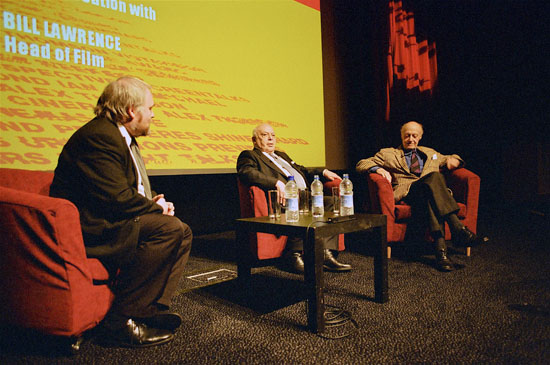 By: Terry Ladlow,
Monday, March 29, 2004 By: Terry Ladlow,
Monday, March 29, 2004 Another satisfying and mouth-watering occasion! Bill Lawrence and the Pictureville staff pulled out all the stops and gave us a great time once again. Although I could only stay until Sunday lunchtime [I had seen the immaculate "Hamlet" in 70mm at Pictureville before] the presentations I experienced were qualitative and gold starred. Great vibrant prints of "The Longest Day", "Lord Jim" and "Mad, Mad, Mad, Mad World" were highlights. Richard Todd, the gentleman of film gentlemen, spoke with mild amusement of his role in "Longest Day" and gave the impression that this was not one of his favourite roles, probably due to the brevity and exaggerated nature of his part. What a wonderful man. Herbert Lom and Jack Cardiff were absolute delights. We heard that the German version of "War and Peace" had Herbert's part almost guillotined. Nice to see the English version gave him more scope. Jack is the doyen of cinematographers and I'd forgotten he had directed too. Our audience was obviously enthusiastic about probing his reminiscences. Thanks a million to the Pictureville projection team for coping with the complexity and variety of 70mm/35mm/video presentations we experienced, especially the sound systems which accompanied them and really put them to the test. Where else, in any part of the world, would a projection team cope so admirably with the challenges presented to them in such a short period of time as at Pictureville. We should all respect the time and trouble that Bill Lawrence and his team go to in order to preserve and bring to life not only nostalgic reminders of great cinematic delights, but nurturing our film heritage in a positive and dynamic way. Many thanks - |
|
The Widescreenest Show On Earth |
|
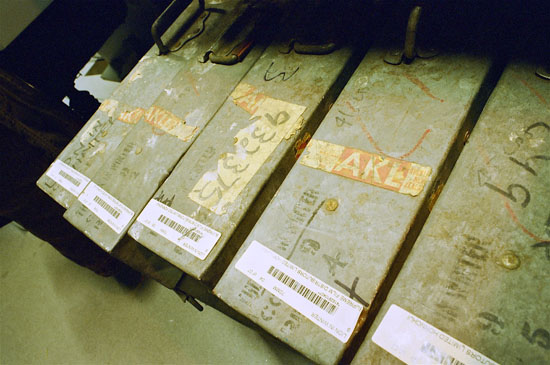 By Ramon Lamarca, Monday May 3, 2004 By Ramon Lamarca, Monday May 3, 2004This is just my second year attending Bradford's Widescreen Weekend and I regret very much having missed the previous editions. This is a great festival and a wonderful place to see pictures. This year's first film was "The Searchers", which was an excellent choice to open a weekend celebrating the 50th anniversary of VistaVision. A true classic, its cinematography captures beautifully the colours from Monument Valley and shows how great VistaVision was. I particularly like the shots from inside the house onto the landscape outside, the contrast between the darkness of the house and the strong colours outside is magnificent. Probably these shots would have not resulted that brilliant in Scope. Also, John Wayne, not being one of my favourite actors, acts superbly in this film. After "The Searchers", I enjoyed very much Richard Todd's talk, very informative indeed. "The Longest Day" looked great on 70mm blow up. Mr Todd mentioned that the film was filmed in black and white because of its dramatic and bleak content. I have read that the film was produced in black and white because of its use of real footage in black and white, which is quite noticeable during the film. I have also read somewhere that Zanuck produced this film to recover from the loses of "Cleopatra". The cleverest and best thing of this film is that everyone speaks their language. There is nothing worse than to see Germans (or French, or Italians, or ...) talking amongst themselves in English with a terrible German accent (or French, or Italian, or ...). The German and the French actors are very good and give credibility to the film. Special mention deserves the brilliant aerial pan of the allies' arrival to a French village. One of the things I like about the Widescreen Weekend is the passion and knowledge from both organisers and public. A member of the public mentioned that he had noticed that the print had been done using a colour positive because he could see some green marks at the edge of the screen. On Friday, I saw for the first time "This is Cinerama". It was a great experience for all the things the film implies like the birth (albeit its predecessors) of widescreen cinema and stereophonic sound and the greatest adventure of all of those who managed to bring Cinerama back to Bradford and get this print done. I would like to thank all of them for making it possible. I was born in 1966 in Barcelona (a city that had three Cinerama theatres although only one showed real three strip cinerama), and so I arrived a little late to this world to see the real Cinerama films. The scenes where the colour quality is the same in the three strips are gorgeous, like the Venice episode or the Cypress Gardens episode. It is also really fascinating the brilliant use of the sound. I prefer the distribution of the channels behind the screen used in Cinerama than the abuse of surrounding speakers nowadays. Going to a multiplex with a small screen and seeing a film with a lot of sound effects coming from the sides and/or behind makes even more obvious that the screen is small and takes me away from the film. Cinerama produced a real inmersive experience with its five speakers behind the screen. |
|
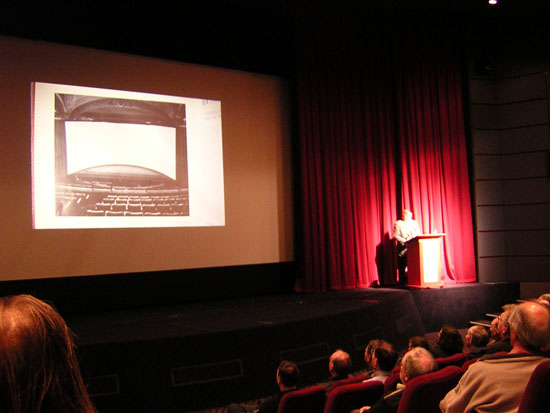 And then... To curve or not to curve, this was the question posed by many people during the Weekend and a very interesting one. I do not think
"The Lion on Winter" looked good on the curve. This is the only film where I noticed some important distortion and also blow up prints that are faded like this one do not benefit from the texture of the Cinerama screen. Brilliant acting from Peter O'Toole. A very good film. The only think I would criticise is the excessive use of some zoom effects (a terrible device!). A remarkable austere soundtrack by John Barry. And then... To curve or not to curve, this was the question posed by many people during the Weekend and a very interesting one. I do not think
"The Lion on Winter" looked good on the curve. This is the only film where I noticed some important distortion and also blow up prints that are faded like this one do not benefit from the texture of the Cinerama screen. Brilliant acting from Peter O'Toole. A very good film. The only think I would criticise is the excessive use of some zoom effects (a terrible device!). A remarkable austere soundtrack by John Barry.Tom Vincent gave a very interesting lecture on VistaVision. I really empathised with him when he mentioned his experience seeing VistaVision on television as a child. What was so exceptional about VistaVision if "apparently" it could fit the television frame unlike the scope films? I had the same question until I saw "High Society" where there is a scene in a bus with Louis Amstrong sitting near the window and speaking out of the television frame. VistaVision wasn't that wide but had no distortion and kept the gorgeous Technicolor on a wider picture for a while. Also, I enjoy variety, and having the VistaVision ratio in between Cinerama, Cinemascope and the 70mm ratios, together with the original Academy ratio was great. Hitchock was very happy with VistaVision and never went wider (anyone out there knows why Hitchock never used an anamorphic process???). Later on during the festival I enjoyed talking to Tom Vincent and I am looking forward to his book. I did not see "Vertigo" this time. I saw a re-release during the 80s in 35mm and the restoration print twice, the last time not that long ago, so I decided to give it a rest, although this is one of the films where new things are discovered every time. Quite a lot has been written about this restoration. I have heard from reliable sources that the colour is not as good as the original dye transfer Technicolor prints. It seems that James Stewart had bluer eyes in the original. The Catalan Cinematheque showed the dye transfer together with the restored and most people agreed that the colour was far better in the dye transfer print (and hence another of the qualities of VistaVision that we no longer can enjoy). It seems that the negative was in a very bad state and since they have to use different sources for the restoration, they had to find a "compromise" colour for the restoration. In any case I think, the colour looks good on the restoration and what is most important, the fact that 70mm prints were released means that the sharpness provided by VistaVision prints can be recreated accurately. The other point of discussion is the soundtrack, the original was in mono and this one is in stereo. Purists would say that the film should be kept in mono but, I think that in a film with such gorgeous music (which has got a very important responsibility in the narrative of the film), stereo makes justice to Herrmann's great score. It has also been said that some sound effects were added for the new mix in stereo. I did not notice any. I think the remasterised sound keeps very much the spirit of the fifties. In conclusion, I think that the restoration is a fine work and hope that more films would receive this treatment. |
|
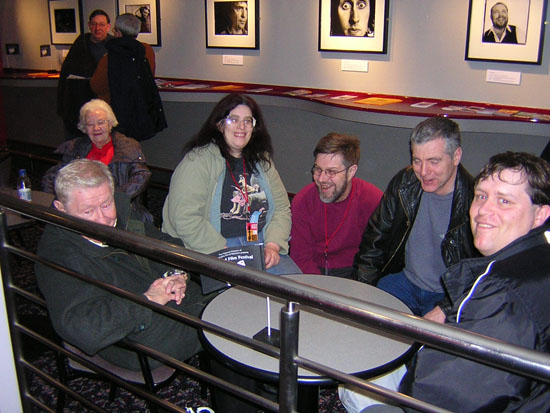 Talking about restorations or/and remasters, recently someone suggested me to see the digitalised version of
"Robin Hood" at the NFT (BFI) in London. I was told I could not criticise digitalisation of films without seeing one. I went and I learnt what cannot be done with a film. Digitalisation changes the texture of the film, it looks like a big TV screen, and not a cinema screen. The colour has probably received some kind of digital treatment, because to me it did not look very much like dye transfer, too even in some occasions, with skies with the same blue all along. This already put me off, but then came the sound. I am used to seeing films from the 30s with its optical sound and the usual hisses and noise, this is the way they were created. What they have done with this digitalisation is to have digital sound, suppressing any hiss or background noise, albeit the sound quality is still the one from the 30s but lacking any of those warm hisses, anyway ... what I mean is that whereas
"Vertigo" is an example of restoration trying to keep the film as it was meant to be seen at the time it was produced,
"Robin Hood" is a bad makeup that mixes technologies from different eras in a terrible way. Regrettably, more digital screenings are on the way. Talking about restorations or/and remasters, recently someone suggested me to see the digitalised version of
"Robin Hood" at the NFT (BFI) in London. I was told I could not criticise digitalisation of films without seeing one. I went and I learnt what cannot be done with a film. Digitalisation changes the texture of the film, it looks like a big TV screen, and not a cinema screen. The colour has probably received some kind of digital treatment, because to me it did not look very much like dye transfer, too even in some occasions, with skies with the same blue all along. This already put me off, but then came the sound. I am used to seeing films from the 30s with its optical sound and the usual hisses and noise, this is the way they were created. What they have done with this digitalisation is to have digital sound, suppressing any hiss or background noise, albeit the sound quality is still the one from the 30s but lacking any of those warm hisses, anyway ... what I mean is that whereas
"Vertigo" is an example of restoration trying to keep the film as it was meant to be seen at the time it was produced,
"Robin Hood" is a bad makeup that mixes technologies from different eras in a terrible way. Regrettably, more digital screenings are on the way.Instead of "Vertigo", I went to see "Where the Trains Used to Go", my favourite film of the festival, a labour of love and a perfect use of the IMAX system and fantastic music by saxophonist Jan Garbarek. I think it should have been better publicised. After 'Where the trains used to go' I started watching the digitally blown and re-framed "Apollo 13" on the IMAX screen, and the eyestrain started shortly after. The film looks flat and the digital blowing is very obvious. The film clearly reveals its non IMAX origin since many of the framing looked odd, with plenty of "on your face" shots of Tom Hanks and the other actors. I had to move my face up and down to go from Tom Hanks's chin to his hair. Feeling dizzy, I decided to leave before the emergency opticians needed to be called in. However, thank you Bill for giving us the chance to see a blow up film in IMAX. I personally do not think this is the future of IMAX. And then "Lord Jim", what a superb print and cinematography by Freddie Young. It proved how great Super Panavision 70 looks. The film looked majestic on the screen and although it goes into the depressive world of guilt, punishment and redemption, this was indeed a true cinematic experience. Again Peter O'Toole giving a very good performance. "Cinerama's Russian Adventure", what an adventure! As I mentioned before, in my first widescreen festival, I read the leaflets from Bradford where people are encouraged to look for possible prints in Cinerama, and so, taken by Bradford's enthusiasm I started my search using my mother tongue (Catalan), and my second (Spanish) and third (English) languages. For a year I have written to several South American Cinemateques looking for material in Cinerama or 70mm. I have also contacted the Catalan Cinematheque and the Spanish Cinematheque. In Argentina, I found a private archive, which in its website claimed to have Cinerama prints. The name of the archive is DiFilms I wrote to them and they told me that they had "La Aventura Rusa de Cinerama" ("Cinerama's Russian Adventure"). They had the 70mm print (the film was mainly distributed in 70mm and not in three-strip). When I asked them for the chances of the film to be lent to Bradford, they told me that they did not lend films because of bad experiences in the past and that they would only consider selling the print. I passed this information onto Bill to think about it. At that time we thought that this was probably the only existing print of "Cinerama's Russian Adventure". We asked lots of questions about the condition of the print. They did not have the equipment to screen it nor to check it and so we asked for the condition of the beginnings of the film in every reel, the colour, scratches, etc. They told us that the film was complete, that it had only been screened in Buenos Aires and then stored in their archive. We assumed that they had a complete print, probably faded, but screenable. A buying offer was made thanks to the contribution of some of Bradford's delegates, the archive DiFilms then asked for a little more: £650, this led us to think that they had something worthy to be sold if they were asking for more. To this sum it was needed to add the expenses of getting the print to UK. Many people were interested in seeing this film, a rarity indeed, and there is no better place in Europe to show it than Bradford. Unfortunately, when the cases containing the print where opened in Bradford, there was a strong smell of vinegar, the magnetic tracks had deteriorated and damaged the print. The print itself had shrunk and was badly damaged. I was really depressed with the news, not only for the impossibility of showing this rarity but most importantly for those who had contributed with their own money to make this possible. Bill reassured me and told me that it was a risk that we took and that I should not feel guilty, this helped a lot, but I was feeling very bad. Since then I have written several letters to the Di Chiara family, who own the archive, the first of which was answered telling me that the deal was closed and the following ones without being answered. At their website you can see that they have been in the business for many years, this is what led us to think we were dealing with professionals. All the contact details are on the website. But then ... a miracle happened and thanks to Will Bouwmeester another print was found, which was in an acceptable condition. I enjoyed it very much. It is an interesting document of Russia and -so far- the closest I have ever seen to what Kinopanorama looked like. It was good to discover that the Russians moved the Kinopanorama camera in a way the Americans did not with Cinerama. Someone mentioned "Napoleon" by Abel Gance and he or she was not wrong, in that some of the movements of the camera, for instance, those in the circus imitating a trapeze, reminded me of the techniques used by Gance in "Napoleon". |
|
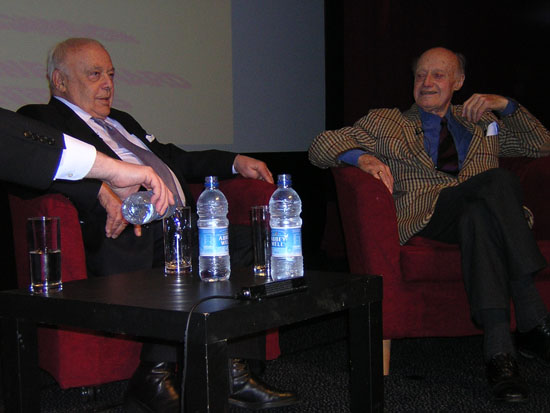 I did not see "War and Peace" since I had seen it on the big screen some years ago and I did not like it very much. I went to see
"Ghost of Abyss" instead. I like stereoscopic photography and there are some nice shots in 3-D. Otherwise, the film is quite boring and routinely directed and the video images taken inside the Titanic and inserted on little boxes on the big IMAX screen have very poor quality. I did not see "War and Peace" since I had seen it on the big screen some years ago and I did not like it very much. I went to see
"Ghost of Abyss" instead. I like stereoscopic photography and there are some nice shots in 3-D. Otherwise, the film is quite boring and routinely directed and the video images taken inside the Titanic and inserted on little boxes on the big IMAX screen have very poor quality."It's a Mad, Mad, Mad, Mad World" really looks good. I do not think it needs any restoration. I did not perceive any important distortion, maybe because my sit was a very good one (thanks Howard for your suggestions on where to sit!). Interesting main credits by Saul Bass (who also designed some other 70mm films main credits like "Exodus" and "Around the World in 80 Days"). I do not find this film particularly funny, it was my first viewing of it since I had always refused to see in on TV (one of the worst devices to see a film!) and so I enjoyed the experience on the curve. Cineramacana was very good. I did not know about Oreste and the short VistaVision film did not entice my interest in him but it was good to see original VistaVision in dye transfer Technicolor. "Tour Eiffel" was a nice surprise, beautiful images in 70mm and a peculiar sense of humour made this a very enjoyable viewing. "Fanny's Wedding" had some stunning images in 70mm and an interesting use of different textures to create a very poetical effect. I found out about this short in my searches over the Internet during the last year. It also has very good sound. A pity that its director, Mr Olivier Brunet, could not make it to Bradford in the end. The two 70mm "roller coaster" films were also very enjoyable and effective, a friend of mine got very dizzy after seeing them! I had already seen "A Year Along the Abandoned Road", this is such a good film that I do not mind seeing it again, another labour of love by the director of "Where the Trains Used to Go" and another brilliant score by Jan Garbarek. The 70mm film quiz made me feel completely ignorant, although I have to say that I have only seen one of the films that Thomas mentions in the website and that is "The King and I", the only one I recognised. I did not see "Hamlet" this time. I have seen it once in 35mm in Barcelona (distributors did not want to pay for 70mm prints, a shame) and have seen it twice in 70mm. Seeing it in 70mm makes a big difference. Magnificent cinematography by Alex Thomson. Producers should again invest in film image quality and produce more 65mm negative films. Instead I saw "Hell Drives", a British production in VistaVision and black and white. At the end of the film Tony Sloman told me that this was an edited version from the original and that the print had not been made from the original negative. A pity. What I saw from the film was interesting, I like the use of black and white and widescreen and in that sense films like "The Apartment" directed by Billy Wilder or "Manhattan" by Woody Allen are terrific examples of what can be achieved with widescreen and black and white. ...And then I had a terrible doubt, I wanted to see "Forbidden Planet" and the talk on perspecta sound, but I also wanted to see "Funny Face", perhaps one of the films that uses VistaVision at its best. Tony Sloman convinced me that I should see "Funny Face" on the big screen and I do not regret it. Although the print was not in mint condition, the film still looks gorgeous. This is one of my favourite musicals, with great direction by Stanley Donen and superb use of colour. Tom Vincent and I were discussing about the print being in dye transfer or not. The first reels looked very much as if they were dye transfer but as Tom Vincent rightly pointed out, in other reels the image looked a little grainy. Bill told us that the print had been made out using different prints, so maybe this is the explanation. |
|
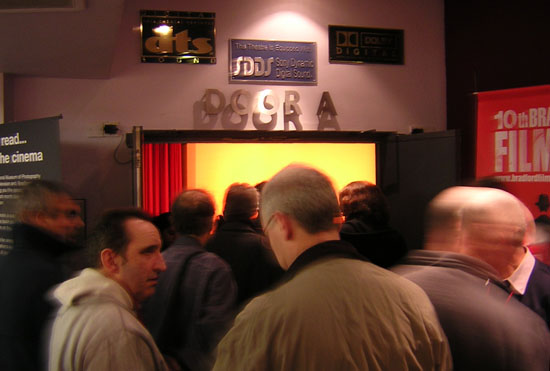 "Earthquake". A big effort to recreate sensurround and also to recreate the kind of shows that William Castle used to organise for the screening of his films (life insurance included!).I do not know if Walter Mathau decided to use his real surname in the credits after seeing the film, but in any case his acting demonstrates very much his attitude towards this film in stark contrast with the seriousness of Mr Heston and his wig who both take the film too seriously. "Earthquake". A big effort to recreate sensurround and also to recreate the kind of shows that William Castle used to organise for the screening of his films (life insurance included!).I do not know if Walter Mathau decided to use his real surname in the credits after seeing the film, but in any case his acting demonstrates very much his attitude towards this film in stark contrast with the seriousness of Mr Heston and his wig who both take the film too seriously."55 Days at Peking" was quite faded and I found it very difficult to see it dubbed. I stopped seeing films dubbed many years ago and seeing a dubbed film in a language I do not know proved a very difficult exercise and so I left the projection after the intermission. A pity there isn't a known good English print of this film in 70mm. This was an excellent weekend indeed. It was good to be able to go to the Cubby Brocoli cinema, which is a little small for my taste but it is very cosy and well decorated. I like seeing films on the big screen, where they were meant to be seen. I find the idea of adding an extra day very good, every day there are less cinemas and the chances of seeing an old film on the big screen are very little and so having a day more in Bradford is brilliant. The perfect blend of passion, knowledge, enthusiasm and relaxed atmosphere that can be found in Bradford is unique and I am already looking forward to next year's festival. A final thought, new technologies do not always imply an improvement (an obvious statement, isn't it?). New generations see images on mobile phones, computer screens or small multiplexes and they think it's great. In the last century people could enjoy bigger pictures on bigger screens and the quality of 70mm that has not yet been surpassed. In the last century, also, cinema was a social experience, seeing a film with 1,500 more people as I had the chance to experience in Barcelona is something unique and this cannot be virtually reproduced ... and by the way, the battles in films like "Spartacus" were shot using real people and not silly digital cartoons like the majority of the films nowadays, which are cheaper but not better. A big thanks to Bill and all the projection team for another great weekend. |
|
Cineramacana as always is a highlight |
|
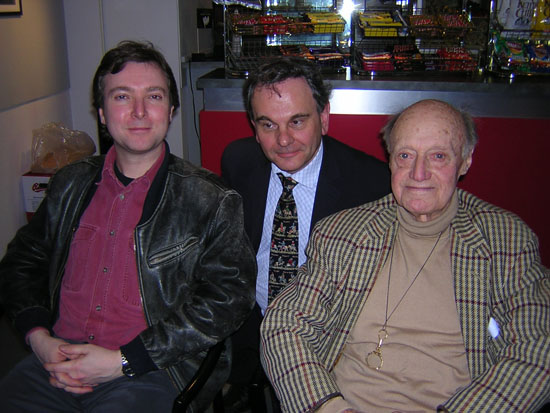 By:
Mark Lyndon By:
Mark Lyndon
Dear Thomas, Best Film, I have to say was "Lion in Winter". Worst film, in spite of the valiant efforts of Tony and his team was "Earthquake", imagine it without the gimmick. Most positive surprise was meeting and talking to Jack Cardiff. The programming is going from strength to strength although there will be a limit to the available prints in 70mm unless as our new academician warns, we lobby strongly and successfully for 70mm prints (not just blowups) of new releases. "Gladiator" for example would have benefited enormously from being filmed with an Arri 765 and presented in 70mm. The reception does not benefit from being held in the bar as a kind of afterthought. A dedicated reception area, as in the past, makes for a better sense of occasion. At least an hour and a half needs to be allotted to it. Cineramacana as always is a highlight of the Festival, although the quiz was something of a flop. |
|
70's Disaster Flick Cheese |
|
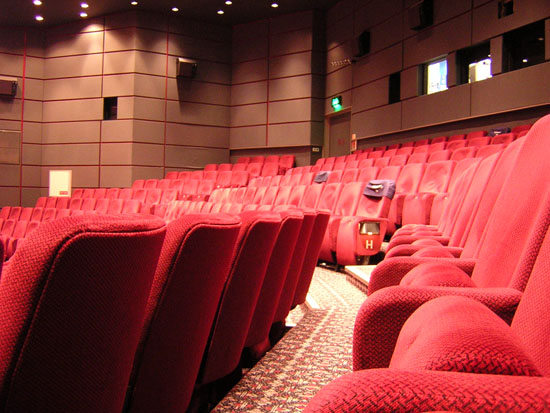 By:
David Olstein,
Thursday, March 25, 2004 By:
David Olstein,
Thursday, March 25, 2004Best film: “Vertigo”. Runners Up: "It´s a Mad, Mad, Mad, Mad World" and “Hamlet”. Quality films and quality 70mm prints. Worst film: In terms of content, “Earthquake” -- a 70mm slice of vintage 70's disaster flick cheese. But an "A" for effort in terms of presentation. I can't imagine enjoying a lousy film any more than I enjoyed “Earthquake”. Showmanship is definitely a lost art. In terms of print quality, “War and Peace”. (You expect the prints of films like “Cinerama's Russian Adventure” and “55 Days in Peking” to be sub-par, but “War and Peace” was far worse than I had expected.) Most positive surprise: “Hamlet” -- I hadn't seen it since the week it opened at the Paris in New York City at the end of 1996, and had forgotten just how good it was. Programming compared with the past years: Better than last year, which is the only other time I've gone. Widescreen Weekend delegate reception: Reception? You call THAT a reception? Aside from the free glass of wine, it wasn't any different than the usual break between films. The reception should be held somewhere else. Cineramacana: Very good. Could have used a few more trailers, but the 70mm short films were excellent. Ps I just wanted to let you know that while “Hamlet” may have had its premiere at the Ziegfeld, the only place in New York City where “Hamlet” could be seen in 70mm by the general public was at the Paris theater (located at 58th and 5th Avenue, only few blocks away from the Ziegfeld). If memory serves, the film opened on Christmas day. |
|
Very Evocative & Existential |
|
|
|
|
Long Live 70mm |
|
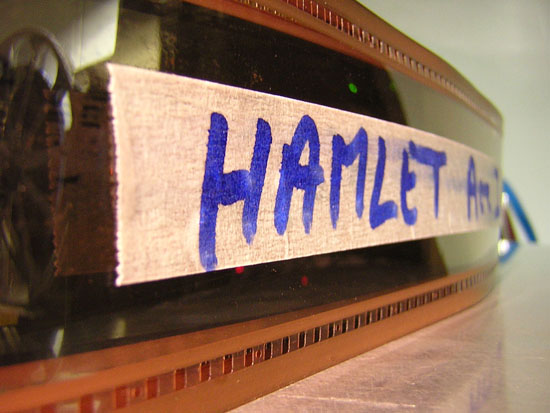 By John Stewart (AVS),
Tuesday, March 23, 2004 By John Stewart (AVS),
Tuesday, March 23, 2004Please read my comments to Bill and you will appreciate what were high lights for me and how much I enjoyed the event. With every item presented with such dedication, enthusiasm and hand work my role [a passive viewer ] would disqualify me from making any remarks that may discourage those people who work so hard to make this unique event possible. Long live 70mm, long live film and the WideScreen weekend. Best Wishes, John Stewart [AVS Lancaster University] Bill, An absolutely fabulous weekend and a terrific thank you to and everyone who put in all the graft behind the scenes. The high lights for me were the beautifully photographed 70 mm Parisian short ["Tour Eiffel"] and of course “Hamlet”'s 70mm presentation, where the image on the screen was nothing short of perfection. In all honesty I have never seen 70mm image look so good, it was as though the screen had been replaced by a window looking into a real world -- talk about that tingle factor!! The event in my opinion is unique and I am so looking forward to next year. Once again a big thank you Kind regards John Stewart [AVS Lancaster University] PS This is not a gripe, but Tony Sloman told me there would be an explanation given during Cineramacana about the horizontal image squeeze of “Mad World” -- never seen Ethel Merman looking that slim! |
|
May the Widescreen Weekend Continue |
|
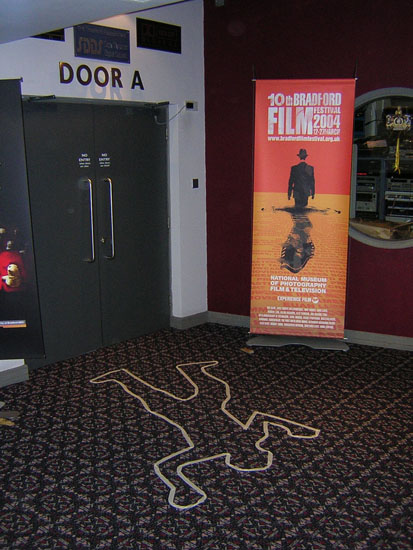 Joy & John Surtees, Monday, April
5, 2004 Joy & John Surtees, Monday, April
5, 2004 Our best films were: "It's a Mad Mad Mad Mad World" & "Earthquake". Most Positive surprise: "Lord Jim". Programme compared to past years: By far much better that 2003. Cineramacana: Brilliant - we love the trailer. The Delegates Reception: Well, because of overrun on timing we found the best option was to go to the loo in the short time available - that way we were ready and comfortable for the next film! We liked starting on Thursday. We think the one film on the Monday is a waste of time - especially as the museum and other facilities are closed. As its a widescreen weekend why show 35mm films Museum staff need to be made more aware of the fact that the festival is going on - e.g film start times/their standard opening times. They don't seem to appreciate what's going on. Why not consider using the Cinema Entrance rather than the Museum entrance for the festival Many thanks for the 2 special editions of 'in 70mm' for the widescreen weekend - very informative and much appreciated. Also the on stage photo is very good - we are on the left hand side... Finally - we've been going to the widescreen weekend since it first started, missing only one year. We really enjoy what has become an annual trip north from Southampton where we live - long may the widescreen weekend continue! With All Good Wishes |
|
Social Event as a Tribute to Film |
|
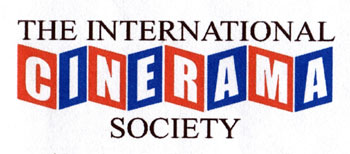 By Brenda & Keith Swadkins By Brenda & Keith SwadkinsA few days ago Howard [Rust] telephoned me asking for reactions to this years Widescreen Weekend. So here are mine and Brenda's reactions to the questions I noted down over the phone. What was the Best film? "It´s a Mad, Mad, Mad, Mad World" What was the worst film? "Fanny´s Wedding" What was the most positive surprise? "Cinerama's Russian Adventure" was better than I expected. Programme compared with Last year? Too many films spread over the four days. I suggest Widescreen Weekend should return to covering the period Friday 14:00 to Monday 12:00 as in previous years. The Widescreen Weekend Reception This was a DISASTER. The socialising and greeting of old friends is a major part of the weekend. There needs to be room to circulate and this is impossible in the cramped surroundings of the Theatre Bar. The previous arrangement with Bill hosting it, in a separate room with waitress service, was far better. The usual time slot on Friday at 17:00 is perfect but there need to be a corresponding 1-hour gap in the film programme at that time. Cineramacana This has lost it´s way completely. It is turning into a planned art film show and losing the original and unique concept of "Bring a film!". Whilst some items involving long haul travel and print shipping need to be pre-arranged, there were several items brought to Bradford this year that were rejected, despite being more interesting than the repeat 70mm material shown. Any comments "Hamlet" was totally the wrong choice for the main spot of the weekend, the Sunday afternoon. This is the centrepiece of the Widescreen Weekend, after which many people have to leave to get home ready for work on Monday. The Sunday afternoon show needs to be a film of universal interest, which "Hamlet" certainly was not. There seemed to be more people in the restaurant than in the theatre. Additionally the film programming is again becoming to intensive. There is a real need for comfort breaks between showings not only for ourselves but also for the projection staff. Longer intervals between presentations would certainly be appreciated. Remember Bradford is as much a social event as a tribute to film. Finally the appallingly bad publicity machine at Bradford finally totally defeated me this year. Despite several telephone calls, I was unable to obtain a detailed programme in advance *) and, for the first time ever, I had to abandon publishing and I.C.S Newsletter to promote the Festival. I hope you find these comments constructive and of help in planning the 2005 weekend. *) Editors note - the final program was sent around by e-mail, February 4, 2004 and made available on in70mm.com and at NMPFT |
Keith is
an NMPFT Academy member and has been a
friend of in70mm.com since 1994 and has written several articles Movies are Never What they Seem To Split or not to Split |
It was one of our Smoothest Events |
|
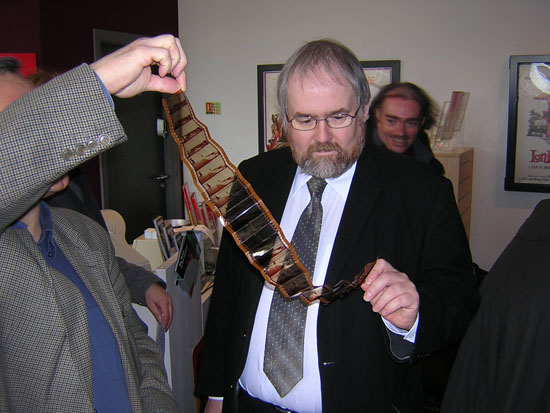 Thanks to everyone for your support over the Widescreen Weekend. Everyone seemed to be enjoying themselves. Apart from the usual glitches in running late etc. it was one of our smoothest events. Thanks to everyone for your support over the Widescreen Weekend. Everyone seemed to be enjoying themselves. Apart from the usual glitches in running late etc. it was one of our smoothest events.Further reports to come later. Wherever you are in the World Happy viewing Bill Lawrence Head of Film National Museum of Photography, Film & Television Bradford BD1 1NQ Tel: + 44 1274 203345 Fax: + 44 1274 394540 |
|
"Earthquake" was the high point |
|
|
I must say "Earthquake" was the high point, but I'm a little biased!! Darren |
See this link |
Films, Speakers and Guests were all Top-notch |
|
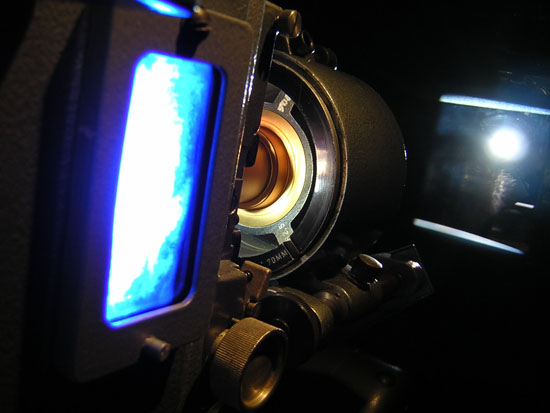 Eric White Eric WhiteTuesday, April 20, 2004 There was very little to criticise in this year's Widescreen Weekend. The selection of films, the speakers and the guests were all top-notch. If someone were to say to me that the programme was a little over-crowded, I would ask them which film they would like to have dropped. There was no film that I would have left out. I have only two minor quibbles. I think the delegate reception could have been better done. By the time those who wanted the complimentary drink had queued up at the bar and had their names laboriously checked off, the reception was half-over. The reception worked better when it was held in the upstairs room off the museum. If anyone is worried about gatecrashers, why not just issue a ticket for the reception together with the cinema entrance tickets? Maybe the problem boils down to labour costs, the need to have staff on duty at the reception to watch the door and supervise the drinks table. I cannot suggest a solution to that one. The other quibble is about the butterfly Vistavision camera that may or may not have been on display in the private collection of the museum. As I understand it, this collection is only accessible by guided tour on Saturday mornings. At this time all good delegates are watching a movie. Could special arrrangements be made for delegates to see this collection at another time? Even without the Vistavision camera, I am told this exhibit is really worth seeing. I forgot to give the projection crew the praise they so richly deserve. Not only are they showing the movies (sometimes in a dodgy condition) at a high standard, but at the same time they are constantly making up and breaking down programmes and shifting prints in and out of less than ideal storage areas, sometimes down a flight of stairs in the basement. Though well equipped, the Pictureville projection room is small and has a floor on two levels. It has its drawbacks as a workplace and the crew do well to make the best of it. I would also like to compliment them on their smooth organization (running projection rooms can be a bureaucracy in itself) but also their ability to work against the clock. As a retired projectionist, I suppose my comments are projection-centred. Doubtless the management of the cinemas and the front-of house people also deserve a pat on the back. |
|
Good Atmosphere and Great Films |
|
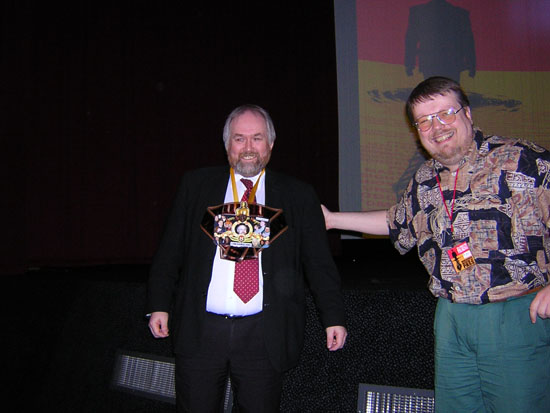 Wouter de Voogd & Johan Wolthuis,
The Netherlands April 21, 2004 Wouter de Voogd & Johan Wolthuis,
The Netherlands April 21, 2004Commented by Bill Lawrence April 21, 2004 First of all a big thanks for Bill and the wonderful team who put together this great Widescreen Weekend (WW) every year! Again this year there was a good atmosphere and some great films to be seen. We like the idea of the WW passes and the nice T-shirts. We have some suggestions though to make the Weekend even more a success, here they come in no particular order. They are meant as positive input, not so much as direct criticism, we love the WW. Thanks for your e-mail and kind comments. You points a taken in the spirit in which they are intended. My thoughts on your points. * We would like the focus of the next WW to be on NEW 70mm films and not only on old ones, however impressive they may be. So try to invite people (not just film fans) who really have or have had influence in the field of filmmaking and -production so we all will know what goes on in their heads when a decision is made whether a film is shot in 35 mm or otherwise. In panels we can then discuss the future of 70mm and the (im)possibilities of wide screen format in the near future. Because we think that is what everyone wants, new 70mm films. It would be great to focus on new 70mm. While some people expressed dislike of "Fanny’s Wedding", a lot of people were impressed to something new and in great quality. We tried to get Olivier to come but he was too busy. Similarly, we invited Kenneth Branagh to talk about "Hamlet". It is difficult to get current practitioners to attend and talk about why they do and don’t work in 70mm because they are either trying to put projects together or, indeed, filming. The nearest we got in recent years was Joe Dunton, but he only supplies equipment. The bottom line is to reach the producers e.g. Jeremy Thomas for his work with Bertolucci. If you have suggestions as to who we should invite, I am happy to follow these up and let you know what happens. * For us the Cineramacana is the pinnacle of the WW, It is a pity that a program of all these snippets of rare films are not shown anywhere, or (partially) emailed beforehand, it would attract more people. Furthermore t he Cineramacana is almost always abridged because of lack of time, why? For many of the audience it is one of the highlights of the WW, a pity. This is the real surprise package. It started off as a free event but has become a major highlight, as you say. Much to my surprise. We always put together about 60 minutes of material beforehand – to make sure we have something to show. The rest of the programme comes together on Friday and Saturday, ready for Sunday morning. We also reserve the right to pull some of the prepared material in case we get too much excellent material brought by people. We always try to make sure that the material that is brought, is shown. However, we end up with some duplicated material and some that is of marginal interest. It always over-runs because we try and do too much. But I wouldn’t want to allow more time for it as it would lose us some of the main features and the trick of showmanship is to always leave the audience wanting more – and come back next year. * This year especially, the "Abandoned Road" the French "Marriage ...." ["Fanny´s Wedding", editor] film and "Tour Eiffel" were once again perfect examples of modern 70mm filming and should have been advertised and shown to much more people! These films should actually have been (or become) part of the regular programming of the every WW, so people would have known that these modern and wonderful 70mm films were shown. I think there is an argument for augmenting the schedule with the sort films you mention and not putting them into Cineramacana. I have had some criticism that Cineramacana is becoming too pre-planned – which isn’t true. So part of the essence of the event is for people not to know what is coming up. * Even WW festival goers have to eat!! But mostly there is no time and no food available except for some snacks. Is it not possible to have a small WW buffet or special meal box available in the Restaurant? Best would be between 5 and 7 pm. A deal with a local Curry Restaurant would do the trick! 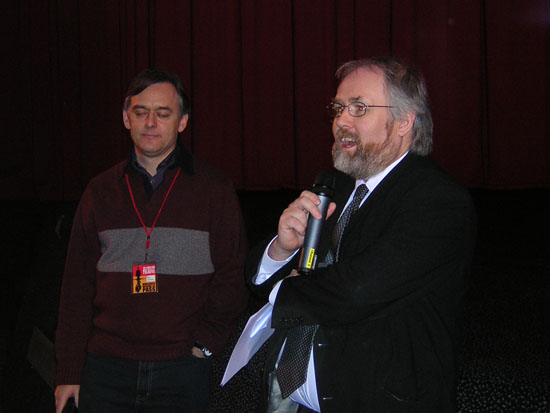 This is the biggest problem. The catering is a franchise and I have no
control over it. We ask them to open the bar/café from 10 am and keep it
open all day with food. Sadly, they agree and then do not deliver. Your
suggestions are good and I will look into the special meal box suggestion.
Also the local facility special deal. This is the biggest problem. The catering is a franchise and I have no
control over it. We ask them to open the bar/café from 10 am and keep it
open all day with food. Sadly, they agree and then do not deliver. Your
suggestions are good and I will look into the special meal box suggestion.
Also the local facility special deal.One problem, I think, is taking a break of about 1 hour in the middle of the day would mean losing a feature film. I do take this into account each year, but there is a conflict between taking a break and allowing more time for things like Cineramacana or panel discussions. Rest assured that this is always in my mind. I will get it right one year. * For the occasional visitor in the main lobby it was NOT visible that the WW was going on and what was shown there. Even at the Pictureville Cash stand, the only info to be found was the (Impressive) Programme of the whole festival. Improve the info and more people will visit for sure! So info of the entire WW somewhere on posters (also handy for everyone). Again, an area I have little control over and a lot of concern about it. I have talked to our Visitor Services Team about creating a better profile for the Film Festival in the Museum and offered a budget, but nothing happens. They have a lot of posters etc they could use but don’t * Could the showing of "This is Cinerama" please take place during the Weekend and not on Thursday?? A lot of oversees visitors will arrive on friday morning and will than miss this unique and amazing experience. Again, an issue of choices. I assume that a lot of Widescreeners have seen the film and want to see other titles e.g. "War and Peace" and "The Lion in Winter". However, I will look to how we use "TIC" next year. * Quite a lot of films shown on the Curved Screen had a lot of image missing on the bottom. We estimated that sometimes about 15 percent of the image was gone! Is it than not better to show these films on the square screen to see the entire image? The image is smaller but complete. This is the problem with the curved screen and prints that were not designed to be shown on the deep Cinerama curve. It was the purpose of John Belton’s talk to highlight this. The Cinerama Curve is a lot deeper than the curve for Todd-AO or the curve that was used for early CinemaScope (which is very shallow). As a result the bigger the curve the bigger the ‘bite’ out of the middle. "IAMMMMW" in particular was a problem as this is also anamorphic. I would prefer to show these on the flat screen, but you wouldn’t believe the aggression of some people who just want to see everything on the curve! It is a compromise trying to please as many people as possible and trying to get close to being correct and spectacular. Johan and I are now in the process of designing a brochure that maybe could lure more people to the Weekend than before. We love to hear from you, |
|
Like the Curve Too |
|
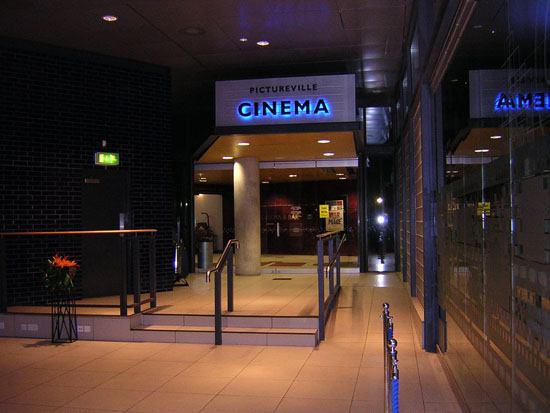 Dave Watson 9 May 2004 Dave Watson 9 May 2004Hi Bill Best film was "Tour Eiffel" short and "Mad World". Great new print looked smashing. Loved it but wife hated it. She found Forbidden Planet funny. Like Thursday to Sunday and you might need the space to fit in all those luverly Todd-AO prints next year. Like the curve too despite the grumbles - after all, we come to WW to see films on the curve. All the best Dave Watson Hi Dave Thanks for your comments. It is difficult keeping you all happy with some wanting the curve and others not. I think the majority want the curve. I will have to get a shallower curved screen installed. Most people seemed happy with the Thursday start. Best wishes Bill |
|
|
Go: back
- top - back issues
- news index Updated 22-01-25 |
|

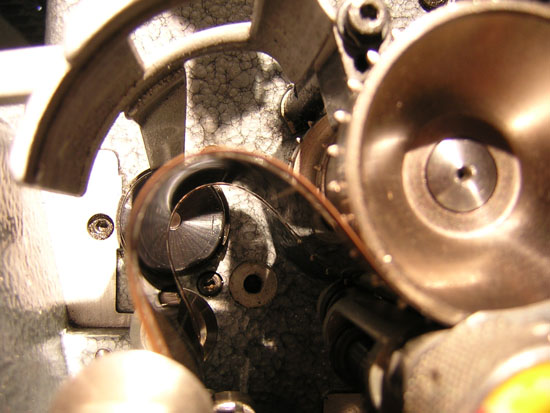 By
By
 By:
By: